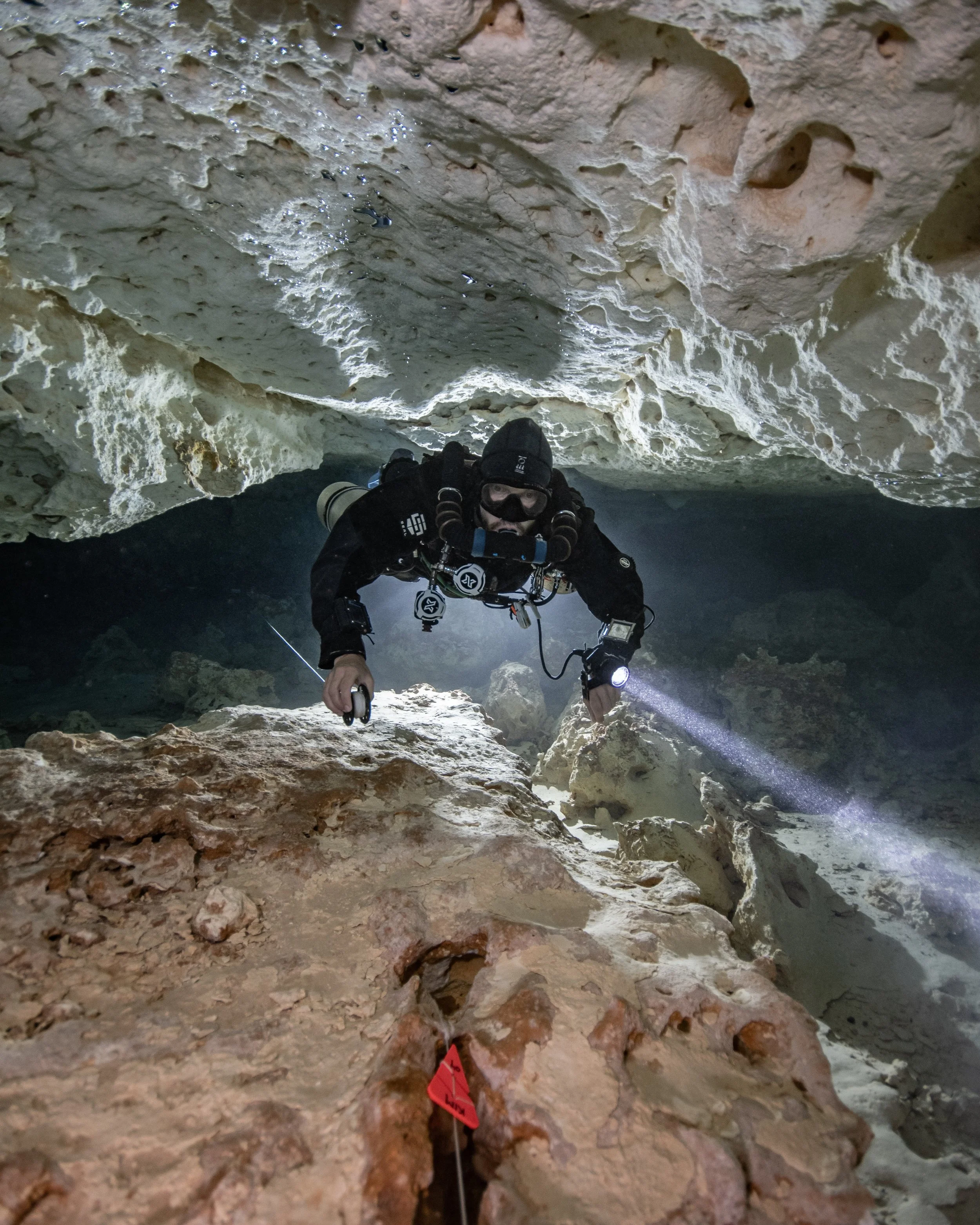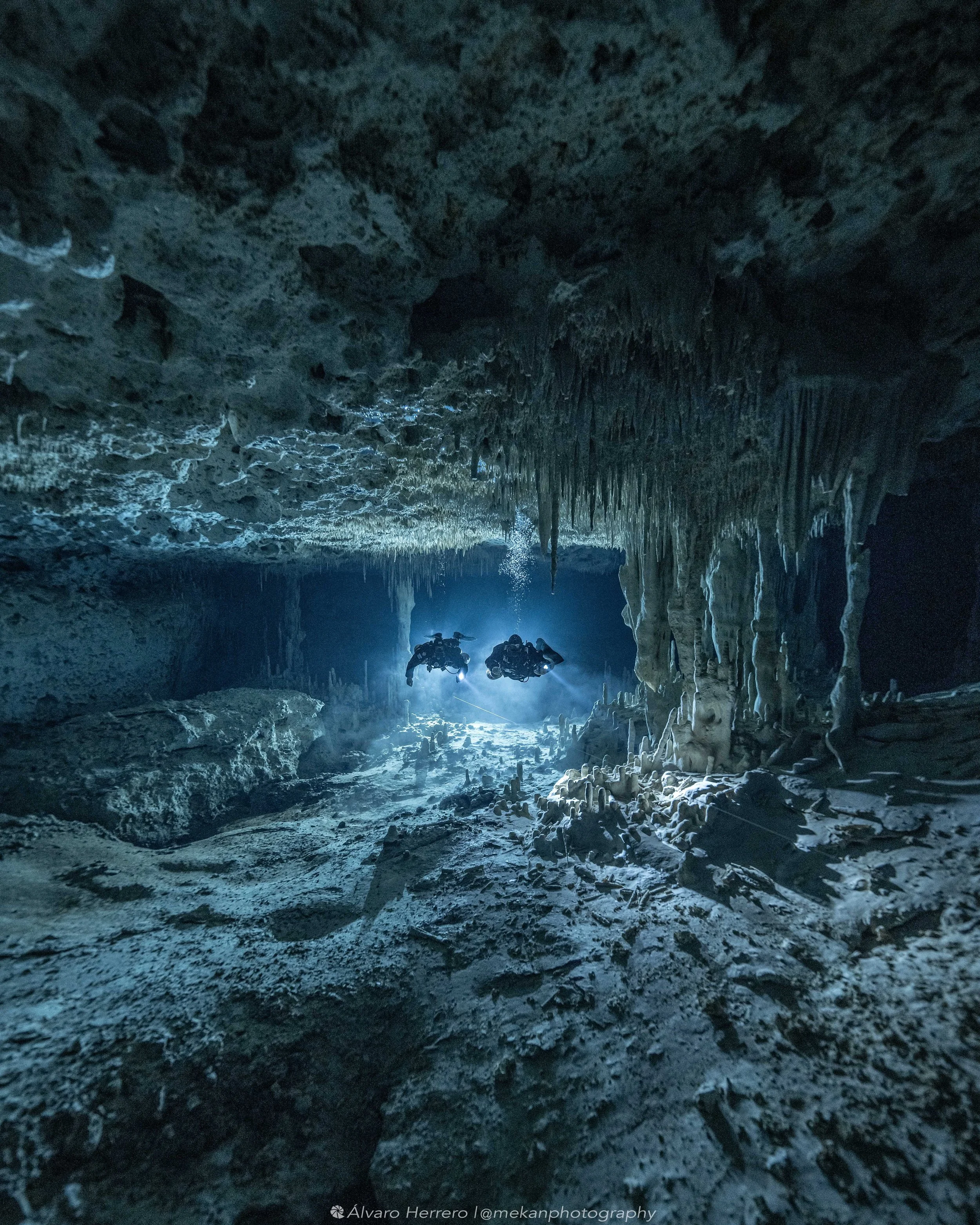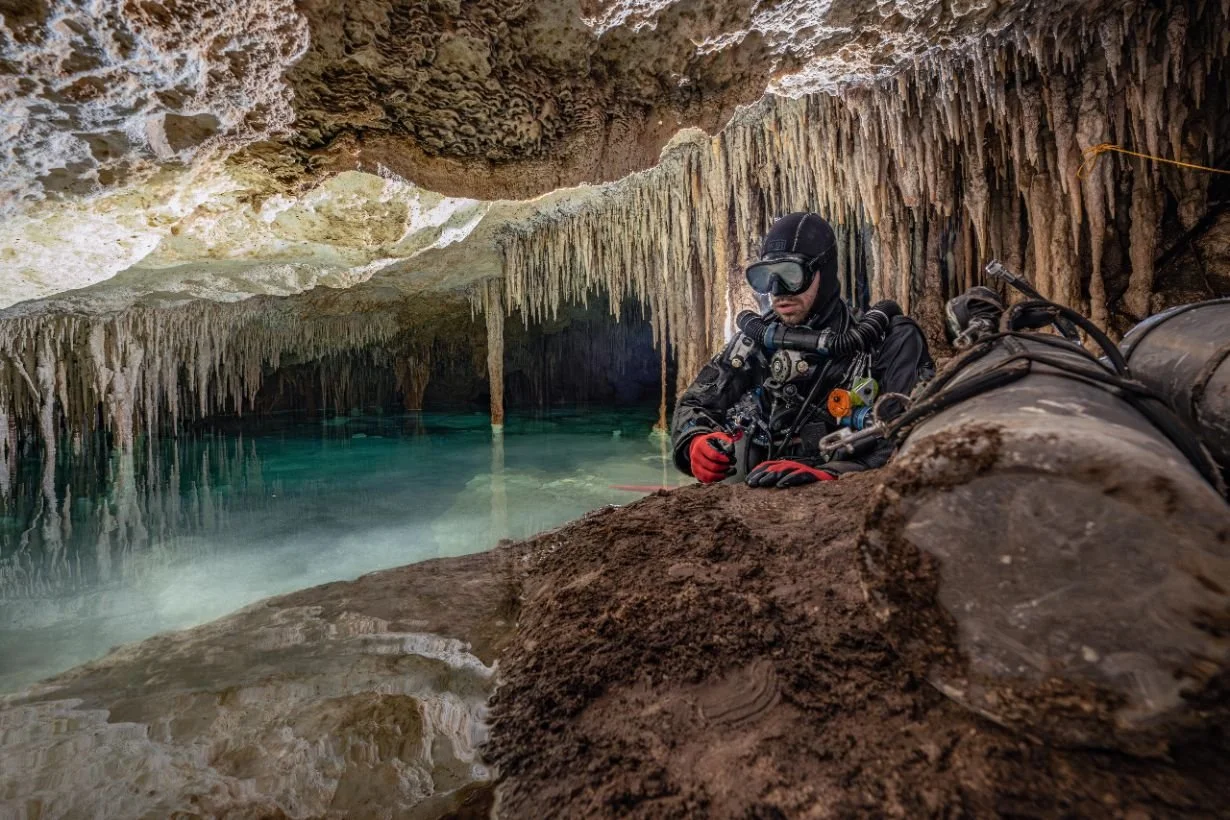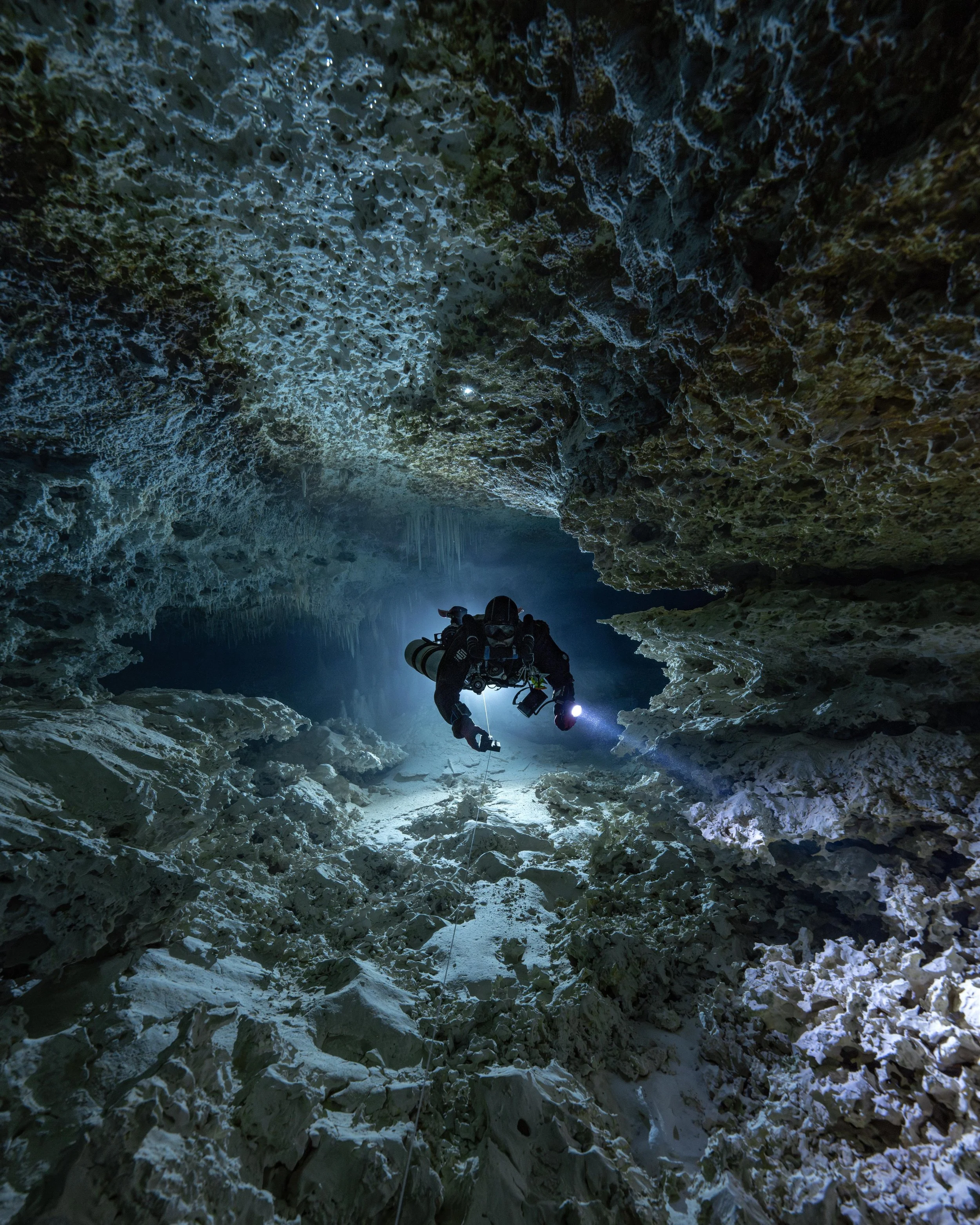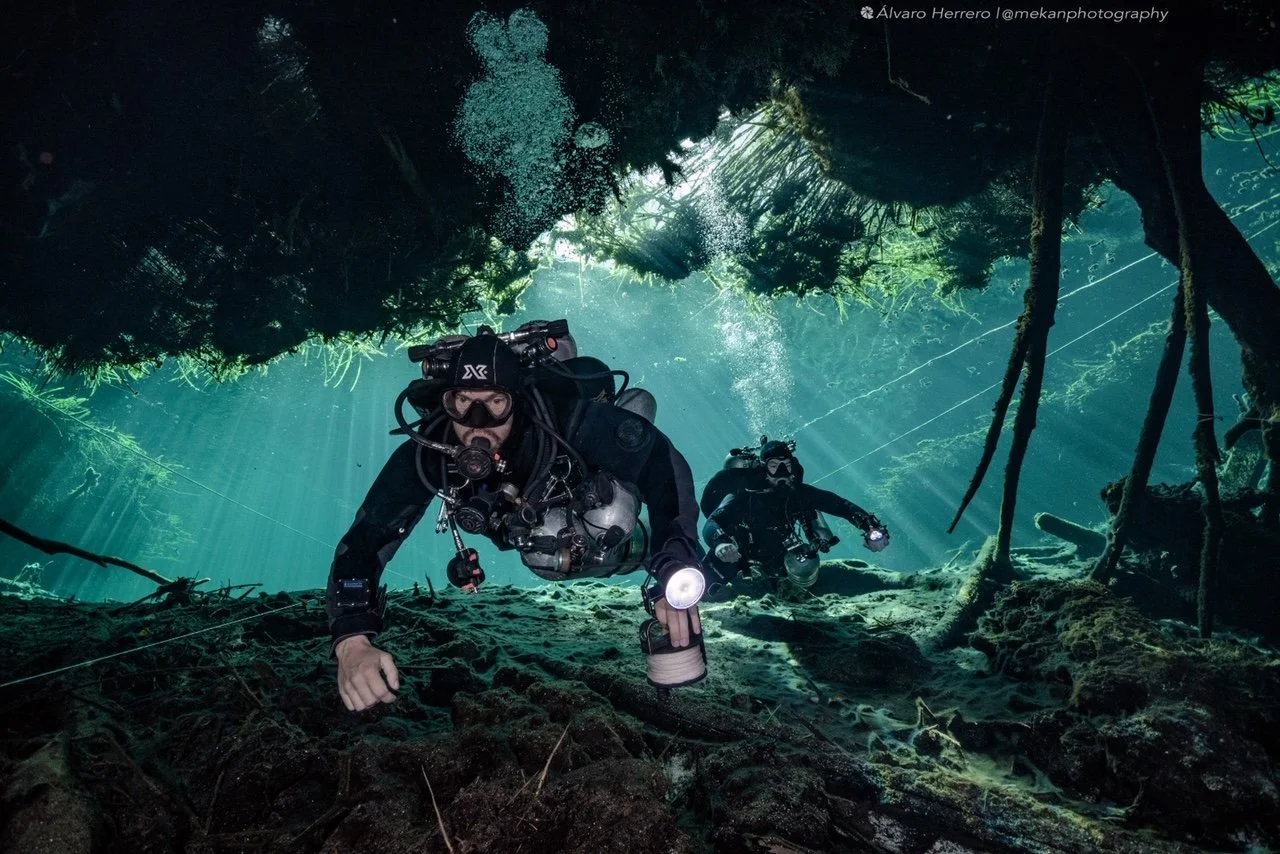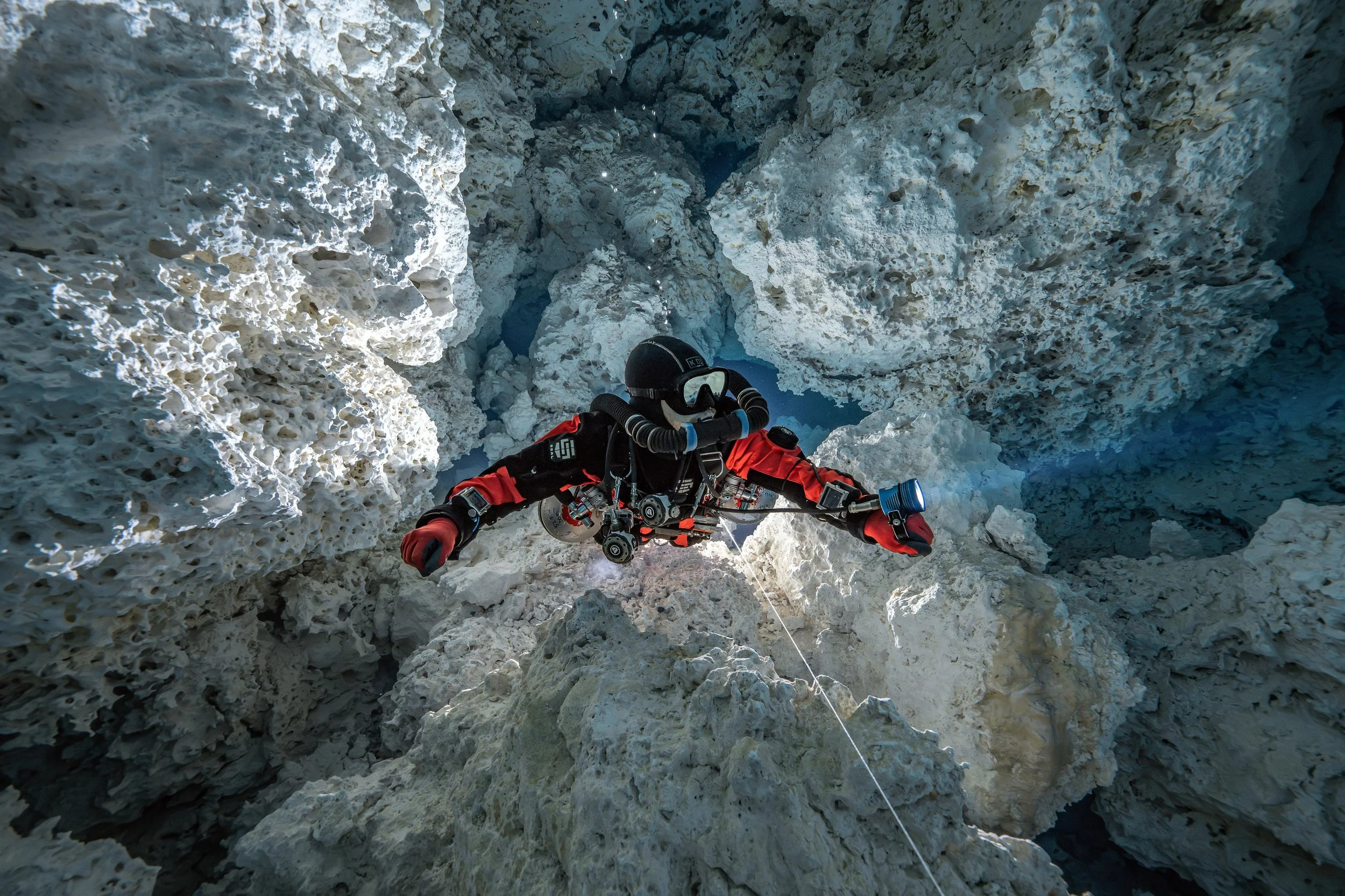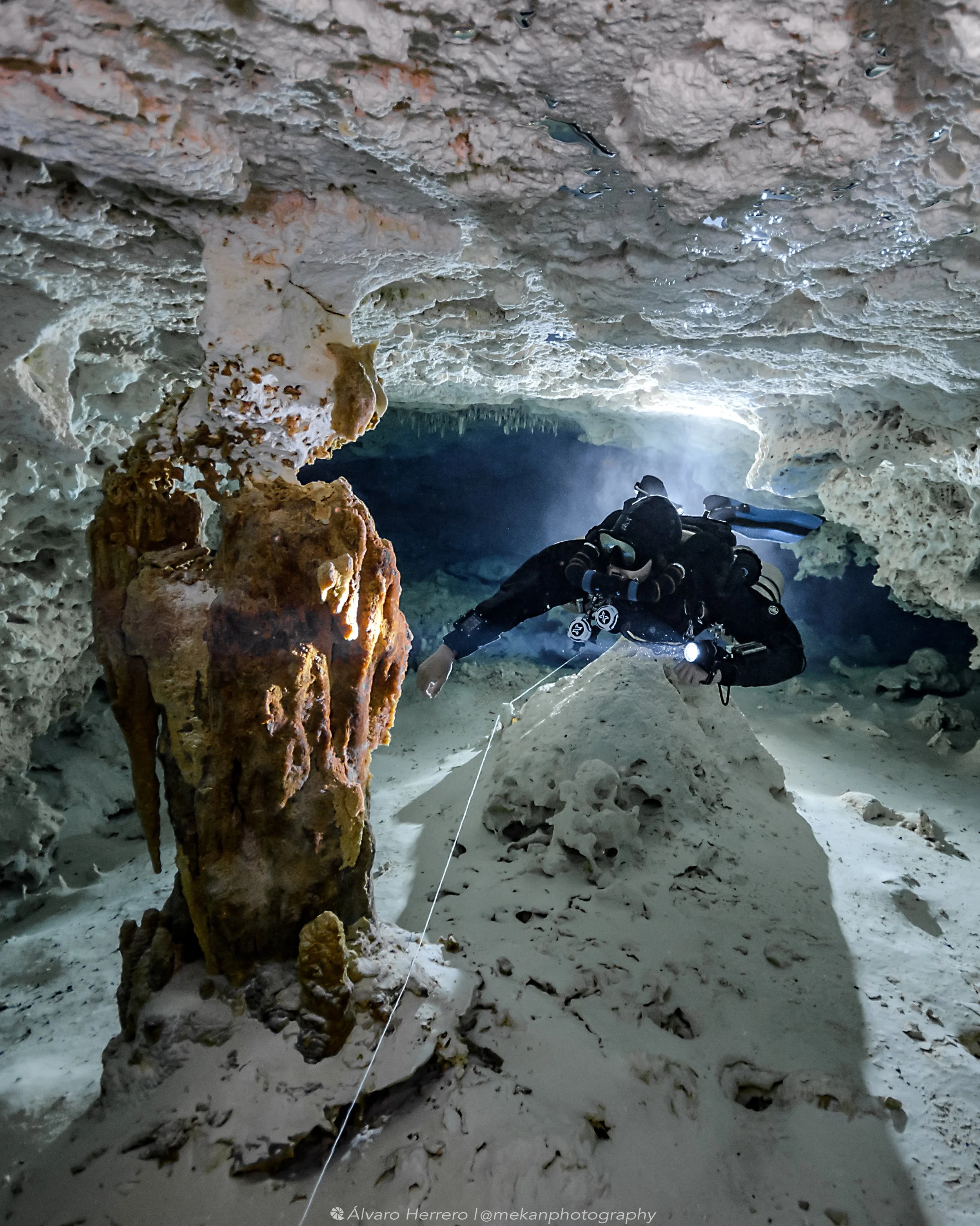The Rebreather Question: Should You Skip Open Circuit Cave Training?
Connecting a jump line deep in the cave (Photo by Alvaro Herero)
As Rebreathers and Rebreather Divers have become more common, often people may consider delving into Rebreather Cave Diving before having a solid grounding in Advanced Cave Diving Training (Stage, Multistage, Diver Propulsion Vehicle) on Open Circuit. As this is a question I am asked frequently, I will look at some of the reasons why you could jump directly into Cave Rebreather Training, and why Open Circuit Training would be of benefit.
Rebreather cave diving through one of the many cenotes
Rebreathers: From Advanced Tool to Accessible Technology
In the past, or at least in my personal diving experience, rebreathers were a tool to be used for advanced cave dives. Longer (3-5 hour dives) or deeper caves (20 meters and below) make sense on a rebreather. Less gas used, more time to solve problems, reduced gas logistics (tanks needed). In my experience, I became a Closed Circuit Rebreather Cave Diver to do longer range dives - the LSD section of Dos Ojos, Muchachos, Regina and downstream Vaca Ha. These were dives that could be done open circuit, but would call for at least 2 stages and deco gas. Using a rebreather in these cases meant less tanks.
But it was only really when exploring that a need, rather than a convenience, for rebreathers became apparent. Generally, my gas consumption is pretty low when guiding. So doing a 4 hour plus dive is manageable using open circuit! For example, diving at Cenote Pet Cemetery to the Blue Abyss and Dark Side of the Moon. However, doing multi stage, multi hour exploration dives in Cenote Plasma Torus showed the limits of open circuit. We would get to where we wanted to continue exploring after 90 minutes of DPV travel, and then have very limited gas to explore. We could have done set up dives, using a valuable day of project time to stage more tanks in the cave, but the KISS Sidewinder CCR really shone here. Now we were able to stage more tanks, leaving them in the cave for emergencies and get to where we wanted to explore without being limited by gas and time.
The Case for Going Straight to CCR Cave Training
Now, with rebreathers being more common and arguably more accessible, people can fairly quickly jump into Cave Rebreather training (with at least open circuit Full Cave certification already). If this is a long term goal, then in some ways it makes sense to start as quickly as possible. Once someone is a trained CCR Diver, then they should build up 100 hours experience (or perhaps 50 hours with a Sidewinder or Gemini). This time should be spent building a solid foundation of buoyancy, trim, positioning and propulsion techniques and practicing rebreather emergency drills. Once a Cave CCR course is successfully completed, the diver is in a position to progressively build up experience and complexity of dives. When two bailout tanks are not enough, then they can add an additional tank. By taking this approach a diver can focus on being a CCR diver, and layer on cave diving after that.
Leaving the cenote for the cave, double stage dive in progress!
Why Open Circuit Experience Still Matters
On the other hand, without a solid background in open circuit cave diving a diver could quickly push their own limits too far. Progressively building up longer or more complex dive plans is generally how training programs work - Intro to Cave without navigation and more conservative gas limits, then Full Cave with navigation and ⅓ as a gas rule. Then divers might take a Stage Cave class, dive single stage before adding another stage tank or DPV training. This approach allows you time to develop your physical and mental capabilities as a cave diver.
The first time you swim 90 minutes into a cave, and have about the same time to swim back, can hit you in different ways. It might be the work of moving through the water all that time is exhausting, or the chafing of a fin giving you a blister. It could be that feeling of ‘wow I am more than an hour away from breathable air if my equipment fails’. The first time I did a 70 minute swim down the mainline in Nohoch Na Chich I wasn’t able to recognise the cave on the way back out, I had mentally exhausted myself and questioned whether I was on the correct line (I was, everything just looked different on the way back until I saw an arrow I recognised). Having done A LOT of open circuit cave diving (and continuing to do so), I also know very well the value of gas. I know that at a certain depth my gauge will decrease by x over ten minutes. Every open circuit cave dive I do, I am verifying how much gas I use over time at depth. For rebreather cave diving, this means I know very well what to expect if I should have to bailout (and having done so for different reasons on different occasions I know my bailout gas planning works).
Finding Your Path Forward
As with all things, there are pros and cons, and both approaches will stand a diver in good stead. Whether someone wants to get into a cave sooner on CCR and be able to continue to grow and practice on their unit, or they choose to build up open circuit diving experience and qualifications before ‘needing’ a rebreather, each approach is valid. At the end of the day, everyone’s diving journey is different, and will depend on your diving needs and goals. Discussing further dive training with instructors (or divers) who do the kinds of dives you aspire to can be a good starting point.
want to discuss your cave or rebreather training questions?
I have extensive experience cave diving both open and closed circuit. Thousands of cave dives, and more than 2000 hours on rebreathers!

